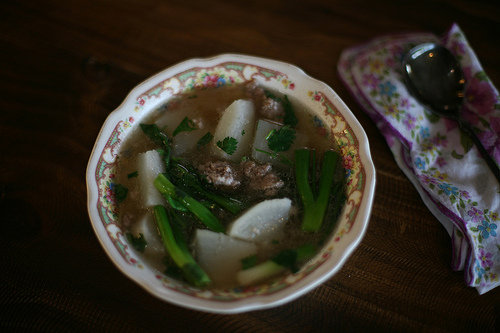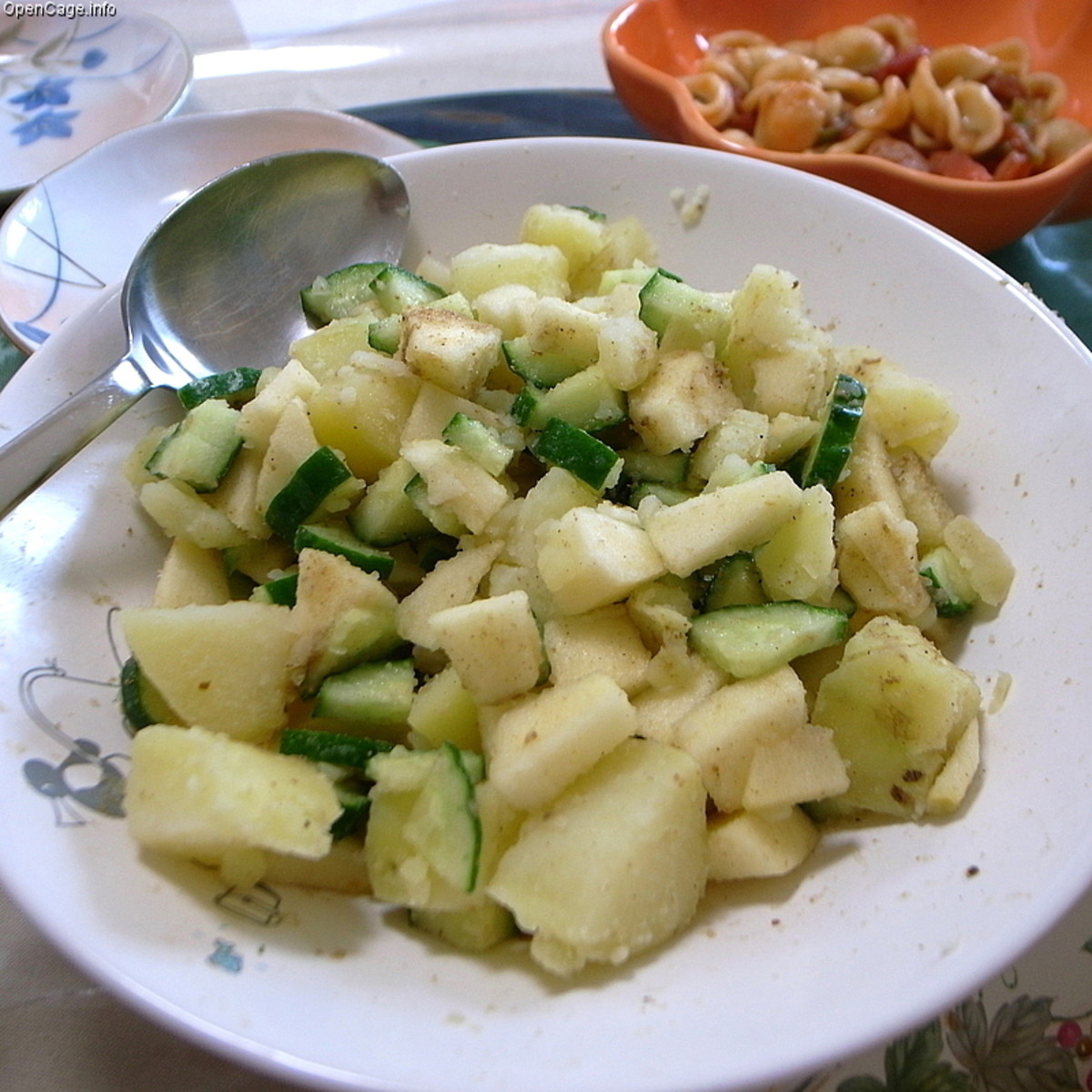Daikon: Your New Favorite Radish

What Exactly Is Daikon?
The first time I ever heard of daikon was three weeks ago in a Thai street food cooking class. Our teacher, Jam, was a lively and spirited woman from the south of Thailand, and she mentioned it in passing, extolling its sweet and spicy flavor. Needless to say, my curiosity was piqued and I went home to research this mysterious food.
Turns out that daikon, also known as white radish, Japanese radish, or Chinese radish, is a long, milky white, relatively inexpensive radish. The name is taken from two Japanese words: dai (large) and kon (root), and is used often in Chinese, Thai, and Japanese cuisine (it is one of, if not the most popular vegetables in Japan). It can be found at most local farmers markets from late fall through early spring, as well as in Asian markets and most organic or health food stores in the vicinity of the fresh ginger.
The more I read about this mysterious white radish, the more I plowed on to uncover why it is such a staple in many Asian dishes. According to fitsugar.com, the white pigment found in daikon is anthoxanthin, which is an antioxidant that is thought to lower cholesterol and blood pressure. It is also known to aid in digestion, which is why daikon it is often served as a side or condiment (remember that the next time you have one too many volcano rolls!). Some health enthusiasts even claim that this magical root aids in weight loss. While that is hard to prove, the root is quite low in calories.
Tired of reading, I took a trip to the grocery to admire daikon up close; the size alone of these radishes is indeed impressive--most are longer than my forearm and they remind me of fat, albino carrots with lush, dark green leaves. I want to buy them, but I have no idea what to do with them. After asking around and reading recipes, I understand that daikon is normally grated and/or pickled and served as a garnish for sushi (how have I missed that?) or noddle soups. However, the vegetable can take on many forms and is just as often eaten raw, stir-fried, grilled, baked, or simmered in soups.
What Should You Do With Daikon?
So, what exactly should you do with daikon besides use it as a pillow for your sushi?
Well, you can peel and slice them raw, then serve them with a rich, creamy dip or simply toss them into a salad for an extra kick. Cook them like turnips, boiled or steamed, grate them for stir fry’s or pickle them for condiments. Oh, and don't disard those precious greens-- sauté the leaves, which have a ton of vitamin C, calcium, iron and beta carotene.
And then, of course, who could forget soup? Personally, I have never been a huge fan of soup, but little by little as I become more adventurous in my eating, the more tolerant I try to be...especially if the soup is loaded with hearty ingredients and imaginative seasonings. I was lucky enough to snag a great recipe from my Thai cooking class instructor and restaurant owner, Jam: daikon soup with pork and green onions. This soup, paired with a fresh and envigorating Thai green papaya salad makes for a perfect meal.

Ingredients: Daikon Soup with Pork (Or Tofu!) and Green Onions
***Because I am not a lover of pork, I would use tofu, and many other root vegetables can be added to the soup...don't limit yourself only to daikon!
• 1 large daikon (or two small ones), peeled and cubed
• 1 pinch of salt
• 6 ounces of minced pork
• 2 tablespoons of light soy sauce
• 1 teaspoon of palm or white sugar
• 4-5 cups of stock
• 2 additional tablespoons of light soy sauce
• 1/2 teaspoon of freshly-ground pepper
• 1 tablespoon of chopped cilantro
• 1/2 cup of chopped green onions
Pork/Tofu Seasoning:
• 2 cilantro stems, minced (use the part of the stem closest to the root)
• 2 pinches of salt
• 3 garlic cloves, minced
• 10 peppercorns
Directions:
1. Mix the seasoning with the tofu, add palm sugar and 2 tablespoons of light soy sauce.
2. Bring stock to a boil, add pork and break up the pieces with a ladle or a large spoon.
3. Add cubed daikon, 2 more tablespoons of light soy sauce and pinch of salt.
4. Let simmer until daikon is cooked, about 20 minutes. Add more stock if needed.
5. Check seasoning and add more soy sauce to taste.
6. Remove from heat and garnish with spring onions, cilantro and freshly-ground pepper.

More Tasty Daikon Ideas:
If you want to make chips or use daikon for your next stir fry, you’re in luck—the process is quick and painless. All you need to do is peel the daikon with a peeler (what you would use on a carrot, for example) then cut the radish crossways for thin, crunchy chips. By dipping the chips in ice-cold water, they will curl and crisp even more. Use sour cream, yogurt or even hummus for a perfect marriage of sweet, salty and slightly bitter. For stir fry’s, cut the daikon into thin julienne strips (like matchsticks) for added nutriention and as an alternative to your usual veggie offerings.








